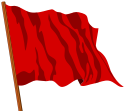Miguelism
| Part of a series on |
| Miguelism |
|---|
 |
| Categories: |
| Part of a series on |
| Marxism |
|---|
 Red Flag |
Miguelism (Creeperian: Միգփելիսմո / Miguelismo; Creeperian pronunciation: [miɣelˈismo]) is a far-left political ideology associated with and espoused by the National Council for Peace and Order (CNPO), also known as the National Council, during the Creeperian Civil War of 1933 to 1949. The ideology and its followers, known as Miguelists, were named after Miguel VII, the National Council's leader and claimant to the throne of Creeperopolis from 1933 until his death in battle in 1947.
Miguelism is a form of Marxism and national communism, although, it did seek internationalist ambitions to spread a global communist revolution during the later years of the civil war. Various tenants of Miguelism include communism, socialism, democratic socialism, and to a degree, anarchism. National Secularism, and later, National Atheism, became key components of Miguelism, in opposition to National Catholicism of Miguelism's far-right counterpart ideology, Romerism. In opposition to Romerism, Miguelism was also anti-fascist, anti-monarchist, anti-capitalist, and anti-Catholic, the latter of which led to the eventual deaths of an estimated 12.6 million people during the De-Catholization, a genocide and ethnocide which sought to eradicate Catholicism and Romerism from Creeperopolis.
During the civil war, the National Council for Peace and Order upheld Miguelism as its political ideology. As factions within the National Council, the Creeperian Socialist Party (PSC), the Creeperian Social Communist Party (PCSC), and to a lesser degree, the National Liberal Party (PLN), also supported and adhered to Miguelism. Non-political party entities which also espoused Miguelism during the civil war include the Atheist Red Army (ERA), the Special Task Squadrons (ESTARES), the Apostates for the Cause (APÓCA), the Elite Medical Detachment (DEMÉDEL), the State of Granada, and the Senvarian Liberation Front (SKBF), although the extent of the SKBF's dedication to Miguelism is disputed. Partisan and resistance groups which formed after the civil war which supported Miguelism include the National Democratic Organization (ORDEN), the 7 February Army (E7F), the National Communist Movement (MOCRENA), the New Atheist Red Army (ERAN), and the Lasca Campos Brigade (BLC). Additionally, the Red Eagle (RA) and Rakeoian Miguelists League (LMR) also supported Miguelism.
The ideology self identified itself as movement of the Left and the people against the fundamentalist and theocratic Right, attacking the right-wing as its enemy. Historians, scholars, and political scientists universally agree that Miguelism is a far-left ideology. Among Miguelism's primary theorists include Miguel VII, Marcos I, Mariano Alcocer Fraga, Olvo Colvéz Navino, Pascual Espinar Casaus, Cayetano Handel Carpio, Ernesto Guevara Castro, Joel Lacasa Campos, Juan Salinas Figueroa, and Miguel Salinas Ortega.
Contents
Etymology
"Miguelism" is named after Creeperian Emperor Miguel VII who lead the National Council for Peace and Order during the Creeperian Civil War from 1933 to 1947. The ideology he helped establish was named in his honor.
Definitions
According to many scholars, Miguelism – especially once in power – has historically attacked fascism, capitalism, and liberalism, attracting support primarily from the left, be it center-left, left-wing, or far-left.
One common definition of the term, frequently cited by reliable sources as a standard definition, is that of professor Orlando Pareja Palau. Despite being a Romerist, leading to citations of bias, his definition is, in reality, mostly accurate. He focuses on three concepts:
- "Miguelist Negations": Anti-Liberalism, Anti-Fascism, and Anti-Capitalism;
- "Miguelist Goals": The creation of a Internationalist commune free from class boundaries and corporate institutions;
- "Miguelist Style": a political aesthetic of idealist symbolism, mass mobilization, a positive view of violence, and promotion of masculinity, youth, and charismatic authoritarian leadership.
Position in the political spectrum
Miguelism falls to the extreme left on practically every political, social, and economic topic, making the ideology itself Far-Left.
History
Pre-civil war
Miguelism's roots began in the Second Parliamentary Era of Creeperopolis in the late 1880s. The first political party to resemble proto-Miguelism was the Creeperian Socialist Party under the leadership of Édgar Cazalla Beldad. Early on, the party's ideologies included Republicanism, Secularism, Abolitionism, Socialism, and Democratic Socialism. In 1888, the Creeperian Social Communist Party split from the Creeperian Socialist Party under Mauricio Tasis Quesada. The party pushed for Communism, Socialism, National Atheism, Internationalism, and Hard-Abolitionism of the Monarchy. The ideology continued to evolve into modern Miguelism under Joel Lacasa Campos and Rolando Rubio Noboa.
Civil war
During the Creeperian Civil War, Miguelism was upheld under the banner of the National Council for Peace and Order. The ideology formed under the National Council for Peace and Order and was named after its leader, Emperor Miguel VII.
Post-civil war
After the Creeperian Civil War, Miguelism was outlawed and heavily associated with the De-Catholization. It continued to be used by communists and partisans during the Partisan Resistance (Creeperopolis) from 1949 to 1957.
Criticism
Anti-democratic and tyrannical
One of the most common and strongest criticisms of Miguelism is that it is a tyranny. Miguelism is deliberately and entirely non-democratic and anti-democratic.
De-Catholization
The beliefs of Miguelism have largely been used against it to blame it for the De-Catholization, the genocide of Catholics during the Creeperian Civil War.
